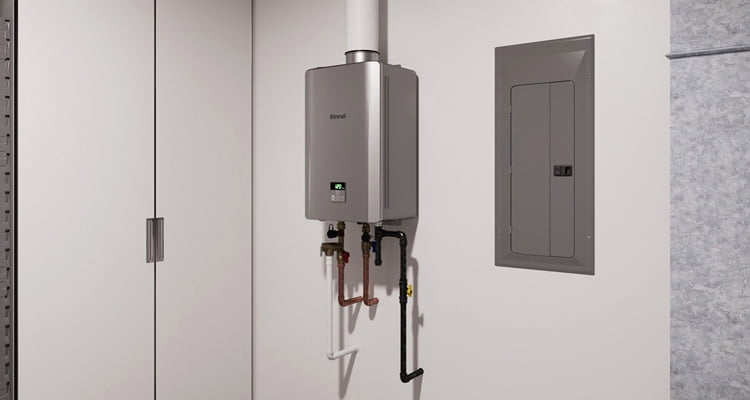When upgrading to a tankless water heater, one of the most important factors to consider is flow rate. Unlike traditional water heaters, which store a set amount of hot water, tankless systems heat water on demand. This means that the flow rate directly impacts how much hot water you can use at one time. If your unit’s flow rate isn’t high enough, you may run into issues like lukewarm water when multiple fixtures are in use.
Let’s break down what flow rate is, how it affects your tankless water heater, and what you need to know to get the right system for your home.What Is Flow Rate?
Flow rate refers to the amount of water moving through your tankless water heater, measured in gallons per minute (GPM). The higher the flow rate, the more hot water your system can provide at once. Each fixture in your home has a different flow rate:- Shower: ~2.5 GPM
- Kitchen Sink: ~1.5 GPM
- Bathroom Faucet: ~1.0 GPM
- Dishwasher: ~1.5 GPM
- Washing Machine: ~2.0 GPM
Why Flow Rate Matters in a Tankless System
Unlike traditional water heaters, which have a storage tank, tankless water heaters must instantly heat water as it flows through the system. If your unit isn’t powerful enough, you may experience:- Inconsistent water temperatures – Hot water may turn lukewarm when multiple fixtures are in use.
- Lower water pressure – A heater with insufficient flow rate may struggle to provide adequate pressure.
- Reduced energy efficiency – An overworked system may consume more energy, leading to higher utility bills.
Choosing the Right Tankless Water Heater for Your Home
To ensure you get the right system, follow these steps:- Calculate Your Home’s Peak Demand: Add up the flow rates of all fixtures you expect to use simultaneously. This will determine the minimum GPM rating you need.
- Consider the Incoming Water Temperature: In the winter months in British Columbia, incoming water is colder and takes more energy to heat. This can reduce the heater’s effective GPM output, therefor you should choose a higher-capacity unit to compensate for this.
- Match the Heater’s Capacity to Your Needs :Standard homes typically require 6–8 GPM for comfortable use, while larger households may need 10+ GPM.
Ways to Improve Flow Rate & Hot Water Performance
- Install a Secondary Tankless Heater: Large homes may benefit from a second unit for extra capacity.
- Upgrade Your Pipes: Narrow pipes can restrict water flow, affecting pressure and temperature.
- Use Low-Flow Fixtures: Reducing water demand helps maximize efficiency without sacrificing comfort.
Tankless Water Heater Rebates in British Columbia
If you’re upgrading to an energy-efficient tankless water heater, you may be eligible for rebates and incentives in BC:- FortisBC Natural Gas Water Heater Rebates – Up to $3,000 for income-qualified homeowners switching to an energy-efficient tankless system. (Learn more)
- CleanBC Better Homes Program – Rebates of up to $3,500 for upgrading to a heat pump water heater. (Learn more)
- BC Hydro Rebates – Financial incentives for installing high-efficiency water heating systems. (Learn more)
